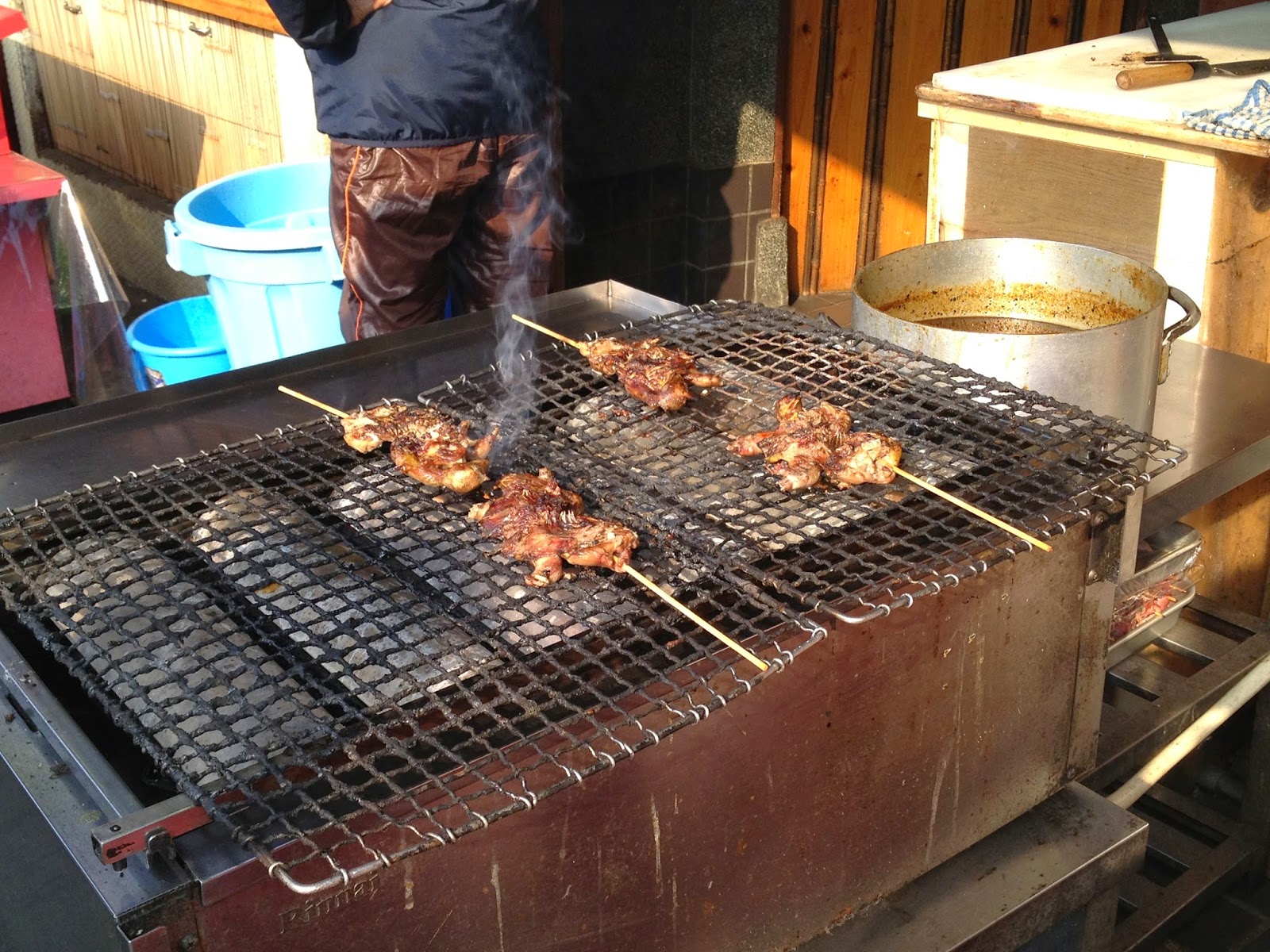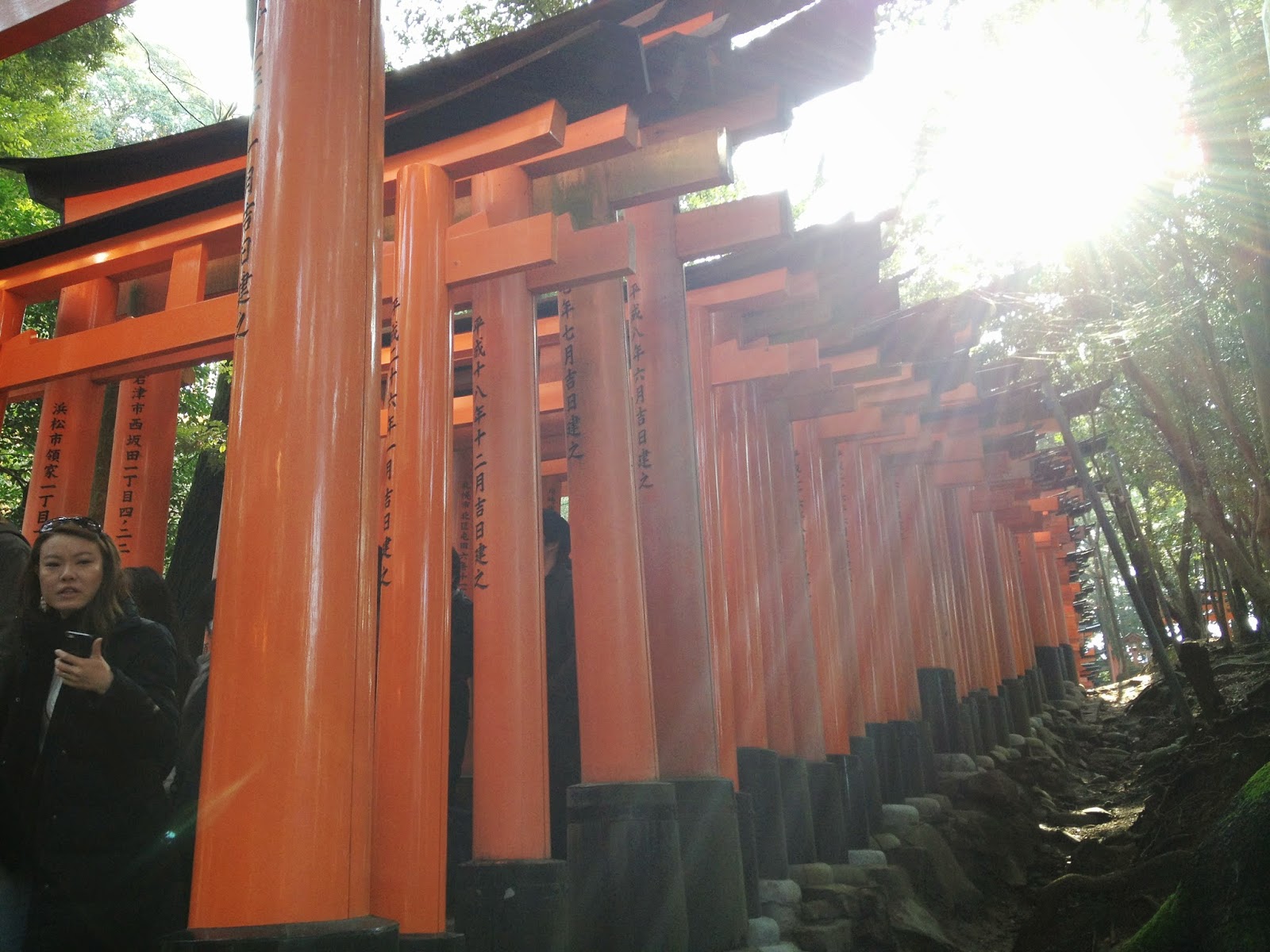Fushimi Inari-Taisha: Home of the Fox and Red Tori Mountain Gates
Whilst in Kyoto, my parents and I traveled to Fushimi Inari-Taisha (伏見稲荷大社), located in Fushimi, on the outskirts of Kyoto. This famous Shinto shrine is the head Inari shrine. I am not very knowledgeable about religion and I know very little about Shintoism, so I did a lot of Wikipedia research and I was fascinated by what I learned.
The "Inari Okami" (稲荷大神) --- also called Oinari --- refers to the Japanese god of foxes, fertility, rice, tea, sake, and of agricultural industry. Inari worship in Japan dates back to the Edo period, with the main patrons being swordsmiths and merchants. Many Inari temples, including Fushimi Inari-Taisho, are decorating with images of foxes or kitsune. Foxes are thought to be the the messengers of the Inari, much like Hermes in Greek mythology.
To quote Wikipedia: "The [Fushimi Inari-Taisha] became the object of imperial patronage during the early Heian Period. In 965, Emperor Murakami decreed that messengers carry written accounts of important events to the guardian kami (gods) of Japan…From 1871 through 1946, Fushimi Inari-Taisha was officially designated one of the Kanpei-taisha (官幣大社), meaning that it stood in the first rank of government supported shrine. The shrine sits at the base of a mountain also named Inari…and includes trails up the mountain to many smaller shrines which span 4 kilometers and takes approximately two hours to walk up…Each of the torii (gates) at Fushimi Inari-Taisha is donated by a Japanese business. First and foremost though, Inari is the god of rice. "
As you can see, this shrine is not only super famous, but also has an illustrious history. On arrival at Fushimi Inari-Taisha, my parents and I learned that this is the biggest tourist attraction in Japan!
As we walked through the local town, I was amazed by the number of small stores lining the street, selling street food, knick knacks, grilled food, etc… It was a lot of fun to look at and delicious to smell!
Osenbei (rice crackers)
Grilling pigeon
Knick-knacks
Approaching the gates of Fushimi Inari-Taisho
The first think that I was struck by when we arrived at the shrine was just the sheer volume of visitors! Granted, we were here only two days before New Years, but still, the number of visitors was astounding. I was also intrigued by the fact that it was a melting pot of visitors. Different skin colors, different languages, difference ages --- it was remarkable to see the variety of people present at Fushimi Inari-Taisha.
A kitsune holding the entrance key to the shrine
On arrival, one must wash one's hands before entering the shrine
Main entry gate into the shrine
One of the shrine's guardians
Once you walk through the main gates, there is a lot of see. Unlike a cathedral, which is usually one large building, Fushimi Inari-Taisha, like other shrines and temples that I have visited in Japan, is composed of several buildings. Generally, there is a large inner courtyard and within that courtyard there are several compounds. When you first enter however, you see a giant shrine. To prepare for New Years, this shrine was being filled with food and drink of all kinds. These are offerings made to the shrine by patrons. I could not get over the vast quantities of gifts! Anything you can imagine, it was there.
The main area of the Shrine was quite crowded, which was a bit of a shame. Whilst trying to work my way through the crowd, a deserted little side shrine caught the corner of my eye. There was a little stone path, yet no visitors. I seized the opportunity to escape the crowd and made my way over here. When I arrived, I was awestruck. There were tiny little shrines by this path, but it was the wall of wishes and origami cranes that caught my attention. So beautiful! I'm not wholly sure what the significance of the cranes is, but I have a feeling that it has something to do with good luck.
After admiring the cranes for a while, I returned to the main area of the courtyard and once again began to walk around. The architecture of the buildings is so beautiful and graceful. I love the arched roofs and the way they flare out to the sides. (If I recall correctly, this design is thought to keep evil spirits away.) I was also really struck but the colors used to paint the shrines and buildings. I really enjoyed the boldness and stark contrast of red, blue, and gold. Fushimi Inari-Taisha was also made extra beautiful with the New Years Decorations of white ribbons, straw, and bamboo shoots.
I don't know how many of you have visited an shrine or temples, but there are things called "ema." To quote wikipedia: "Ema (絵馬) are small wooden plaques on which Shinto worshippers write their prayers or wishes. The ema are then left handing up at the shrine, where the kami (spirits or gods) receive them…Ema are sold for various wishes…Sales of ema help support the shrine financially." At Fushimi Inari-Taisha, they had special "tori" shaped ema. I bought one and was sure to write my wish.
So many people have written emas at Fushimi Inari-Taisha
After hanging my ema, we made our way to the mountain to visit the famous tori gates. We didn't make the two hour hike, but we walked up enough of the way to see a lot of the gates. What an impressive site --- something everyone should see at least once in their life!
We spent about an hour wandering the shrine. It was really impressive and quite beautiful. I really enjoyed it and am glad that we visited Fushimi Inari-Taisha! On the walk back to the train station, we perused the different stores and even bought some snacks along the way! What a fun way to spend the morning!
Freshly made osenbei
My shichimi (spicy) osenbei
Grilled fish
Freshly made takoyaki
It was so tasty!




























Comments
Post a Comment